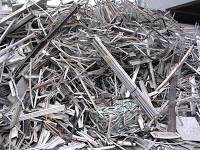
Waste and Scrap. You will hear your management talking about it constantly. It costs a lot of money to manage, and is imperative to constantly battle against.
Scrap is the easy one here. Scrap is the discarded or rejected material from an operation suitable for reprocessing. Scrap can be very expensive, as it can be left over materials in excess of those needed for an assembly, or could be an entire batch of parts outside tolerances that need to be reworked or recycled. That lost material, the time spent making and dealing with it, and the time and cost of labor to rework and repair the parts for use can become very costly.
I was told by an associate over lunch one day that it used to be common practice in many automotive plants to leave wide tolerances, and add an addition process in the production; the rework process. So essentially, during the building of each car, major components would have to be hand tooled to fit into their assemblies. It had to be done piece by piece as well, since each part was defective in different ways. These plants had entire rework teams hired and employed to handle this common issue. Needless to say, this kind of manufacturing had to be expensive and time consuming, showing the weight that scrap can have on your business.
Waste is harder to manage. Waste has been analyzed in many different ways, and lean manufacturing is all about reducing waste. What causes the most concern is the definition of waste. The definition is very broad, and covers the two general kinds of waste; tangible and intangible. So lets take a look at some different kinds of waste.
The Toyota Production System, the origins of many of Lean Manufacturing’s principles, lists out seven kinds of wastes:
Overproduction
Waiting
Transporting
Inappropriate processes
Unnecessary inventory
Unnecessary/excess motion
Defects
As you can see, much of this involves wasted time, as every hour of production time spent on producing unnecessary goods, or waiting for goods to arrive, is an enormous cost to the company. Our focus, however, is on the tangible waste and scrap.
Don't waste time waiting for your goods to arrive!
In our list, we see that obvious tangible wastes include defects, unnecessary inventory, and overproduction. In our definition of scrap, we include rejected material (defects), and excess materials (overproduction). In addition, scrap often includes reworking the material so that it can be used (unnecessary/excess motion).
Therefore, our answer to our question is simple, scrap is waste, but not all waste is scrap.
This leads us to the simple understanding that in order to reduce waste, and increase profits, a serious plan to reduce scrap and rework must be put in place. There are a number of ways to reduce scrap and rework, and one very important method is to focus on the manufacturing process.
In order to reduce scrap, and therefore waste, it is vital to evaluate design and assembly concepts up front, where problems can be identified early in the product development lifecycle. The earlier a problem is spotted, the cheaper it is to fix.
Predictive and root cause analysis processes are important to reduce waste.
Learn more about Worst Case Tolerance Analysis and reducing the risk of scrap with your manufacturing
Click Here to Watch the FREE Webinar On-Demand
By: Ben Reese
These Stories on CATIA
No Comments Yet
Let us know what you think